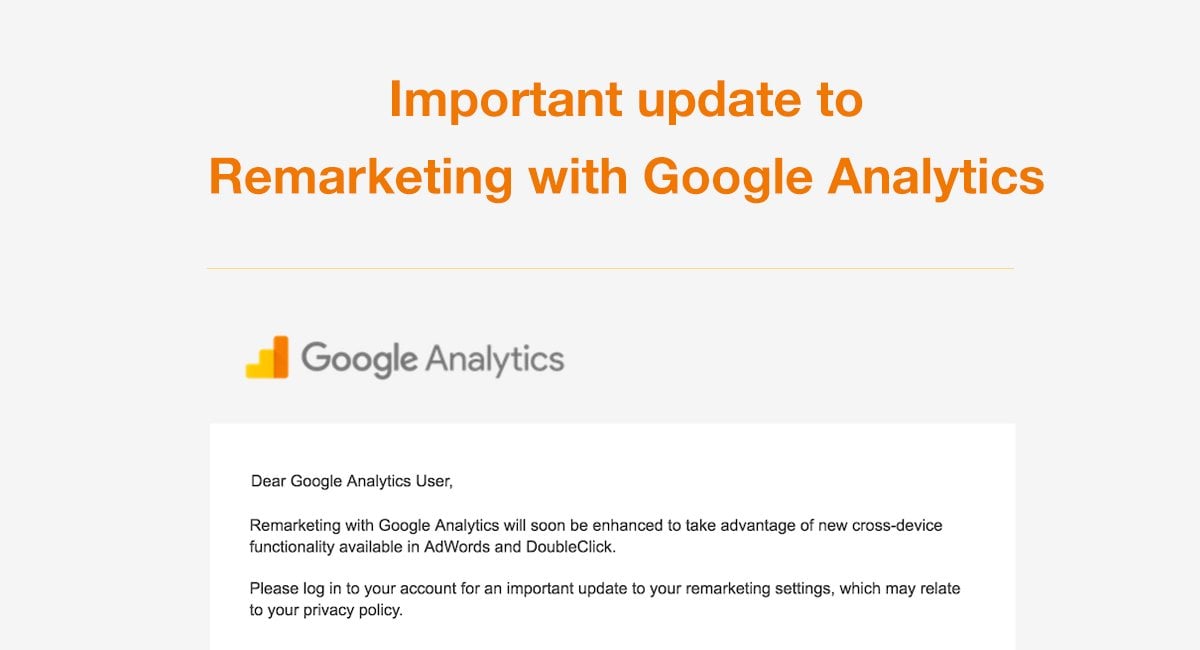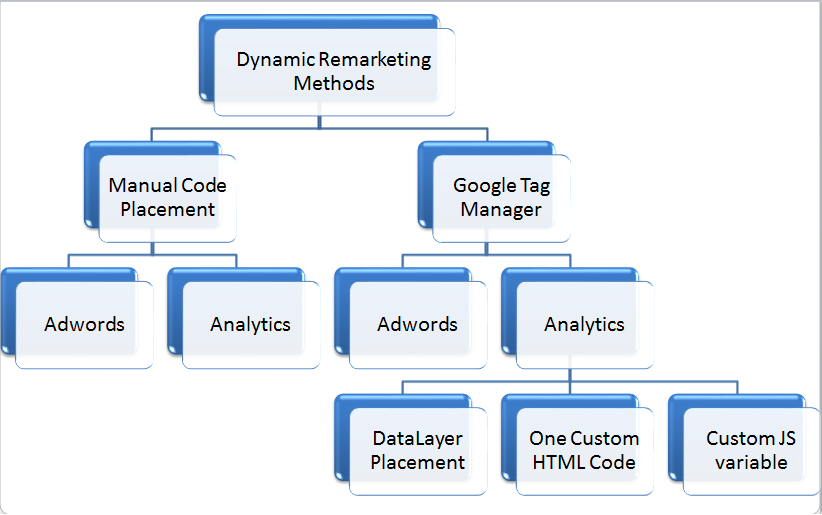Advanced Techniques for Remarketing In Google Analytics
Advanced Techniques for Remarketing In Google Analytics
Blog Article
Remarketing in Google Analytics: Changing Visitor Data Into Sales
Remarketing in Google Analytics provides a strategic method that holds the power to convert site visitor data right into substantial sales results. By utilizing the abilities of this innovative tool, services can open a trove of insights that lead the means for boosted consumer engagement and revenue generation. The capacity to specifically target market based upon their behavior and choices opens up doors to a world of opportunities, driving companies towards lasting growth and earnings. Via a precise evaluation of visitor activities and a tailored remarketing strategy, organizations can navigate the electronic landscape with precision and skill, unraveling the real possibility of their online presence.

Benefits of Remarketing in Google Analytics
Remarketing in Google Analytics provides companies the opportunity to reconnect with website visitors who have revealed interest in their services or products, thereby increasing brand name exposure and conversions. By leveraging this powerful tool, services can stay top-of-mind with prospective consumers who have already engaged with their internet site. One of the vital advantages of remarketing is the capacity to target certain audiences based on their actions on the site, permitting individualized messaging and customized ad campaign.
In addition, remarketing in Google Analytics can aid businesses increase their conversion prices by re-engaging with site visitors who might not have actually bought or finished a preferred action on the website during their preliminary see. This targeted technique can bring about higher conversion prices and inevitably drive even more sales. Additionally, remarketing can also help services develop brand commitment and depend on by maintaining consistent interaction with prospective customers throughout their acquiring journey.
Setting up Remarketing Projects
When launching remarketing campaigns in Google Analytics, businesses require to meticulously intend and implement calculated targeting tactics to properly reach their desired audience. The primary step in setting up remarketing campaigns is to specify clear purposes. Whether the objective is to boost website conversions, advertise details products, or increase brand name recognition, having a distinct objective will direct the entire campaign technique.
Next, services need to develop target market lists based upon details requirements such as site visitors, individuals who deserted their shopping carts, or those that interacted with specific web content. These lists permit targeted messaging customized to each segment of the target market, raising the possibilities of conversion.

Last but not least, businesses must establish conversion monitoring to gauge the success of their remarketing campaigns accurately. By evaluating the efficiency information, companies can enhance their campaigns for far better results and higher ROI.
Leveraging Audience Segmentation for Remarketing
Using target market segmentation is a critical strategy for enhancing the effectiveness of remarketing campaigns in Google Analytics (What Is “Remarketing” In Google Analytics?). By separating your site site visitors into unique teams based on their actions, demographics, or rate of interests, you can customize your remarketing efforts to target these particular segments with appropriate ads. Target market division enables you to create even more customized and targeted campaigns, raising the chances of re-engaging visitors and driving conversions
Segmenting your audience enables you to deliver customized messaging that reverberates with each group's preferences and demands. You can produce different remarketing checklists for individuals who deserted their purchasing carts, More hints went to particular item web pages, or downloaded and install a certain source. By recognizing the different motivations and rate of interests of these sectors, you Your Domain Name can craft engaging advertisement creatives that are most likely to capture their attention and trigger them to review your website.
In addition, audience division also helps you enhance your ad invest by concentrating on high-value sectors that are much more likely to transform - What Is “Remarketing” In Google Analytics?. By analyzing the efficiency of each segment, you can allocate your budget plan better and make best use of the return on your remarketing financial investment
Analyzing Remarketing Performance Metrics
To effectively examine the success of remarketing projects in Google Analytics, evaluating vital performance metrics is crucial. Metrics such as click-through rate (CTR), conversion rate, cost per purchase (CERTIFIED PUBLIC ACCOUNTANT), and return on ad invest (ROAS) give important insights into the efficiency of your remarketing initiatives. CTR indicates the portion of individuals that clicked on your ad after seeing it, reflecting the advertisement's importance and attract your audience. Conversion price measures the percent of users who finished a wanted action, such as buying, after clicking on your advertisement. CPA helps establish the expense of obtaining a customer with your remarketing campaign, while ROAS examines the revenue created for each and every dollar invested in marketing. By assessing these metrics, you can recognize locations for renovation, maximize your campaigns, and allot spending plan better to optimize the ROI of your remarketing strategies in Google Analytics.

Best Practices for Remarketing Success
Structure on the foundation of analyzing remarketing efficiency metrics, applying best practices is key to accomplishing success in your remarketing undertakings. Additionally, make certain that your remarketing ads are aesthetically appealing and consist of engaging telephone calls to activity.
Bombarding users click with the very same advertisement repetitively can lead to inconvenience and lowered efficiency. Monitor your projects regularly, assess the data, and make data-driven choices to continuously fine-tune your remarketing efforts for optimal effect.
Verdict
To conclude, remarketing in Google Analytics provides organizations the chance to leverage site visitor information to boost sales and drive conversions. By making use of target market division, assessing performance metrics, and applying finest practices, organizations can customize their remarketing efforts to target high-value sections efficiently. Through engaging ad creatives and conversion tracking, organizations can develop brand commitment and count on, eventually maximizing the influence of their advertising strategies.
With a meticulous evaluation of site visitor actions and a customized remarketing strategy, businesses can browse the digital landscape with accuracy and finesse, unwinding the real potential of their online presence.
One of the key benefits of remarketing is the capability to target certain target markets based on their actions on the website, enabling for individualized messaging and tailored advertising and marketing projects.
Additionally, remarketing can likewise aid organizations build brand loyalty and trust fund by keeping consistent interaction with possible customers throughout their purchasing trip.
Metrics such as click-through price (CTR), conversion price, expense per acquisition (CERTIFIED PUBLIC ACCOUNTANT), and return on ad invest (ROAS) supply beneficial insights into the effectiveness of your remarketing initiatives. By evaluating these metrics, you can determine locations for renovation, enhance your campaigns, and allocate budget a lot more successfully to optimize the ROI of your remarketing techniques in Google Analytics.
Report this page